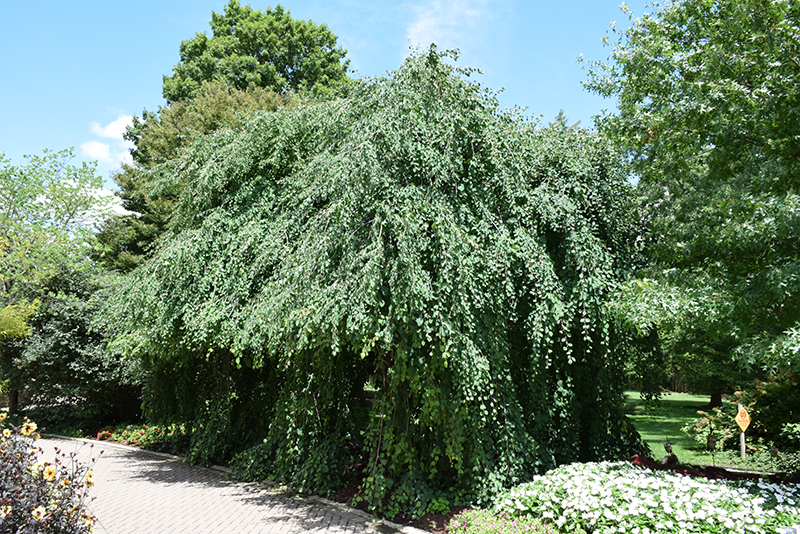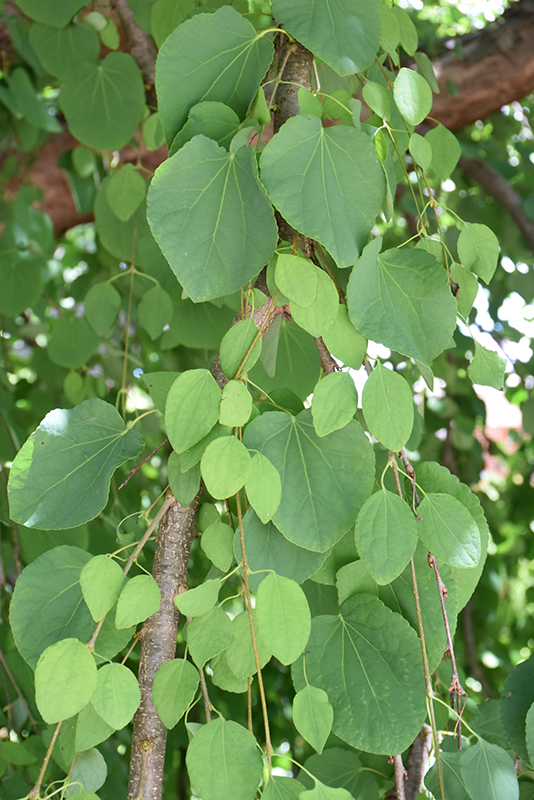Brunswick
422 Bath Road
Brunswick, ME 04011
1-800-339-8111
207-442-8111
Falmouth
89 Foreside Road
Falmouth, ME 04105
1-800-244-3860
207-781-3860
Cumberland
201 Gray Rd (Route 100)
Cumberland, ME 04021
1-800-348-8498
207-829-5619
Amazing Grace Weeping Katsura Tree
Cercidiphyllum japonicum 'Amazing Grace'
Height: 30 feet
Spread: 35 feet
Sunlight:
![]()
![]()
Hardiness Zone: 4b
Description:
A graceful tree with cascading, weeping branches that descend on a rounded form; brick red spring foliage matures to blue-green, then finishes with a subdued orange-yellow in fall; a great accent tree choice in almost any landscape
Ornamental Features
Amazing Grace Weeping Katsura Tree is primarily valued in the landscape for its highly ornamental weeping form. It has bluish-green foliage with grayish green undersides which emerges brick red in spring. The fragrant heart-shaped leaves turn outstanding shades of orange and yellow in the fall. The shaggy gray bark adds an interesting dimension to the landscape.
Landscape Attributes
Amazing Grace Weeping Katsura Tree is a dense deciduous tree with a rounded form and gracefully weeping branches. Its average texture blends into the landscape, but can be balanced by one or two finer or coarser trees or shrubs for an effective composition.
This is a relatively low maintenance tree, and is best pruned in late winter once the threat of extreme cold has passed. It has no significant negative characteristics.
Amazing Grace Weeping Katsura Tree is recommended for the following landscape applications;
- Accent
Planting & Growing
Amazing Grace Weeping Katsura Tree will grow to be about 30 feet tall at maturity, with a spread of 35 feet. It has a low canopy with a typical clearance of 1 foot from the ground, and is suitable for planting under power lines. It grows at a fast rate, and under ideal conditions can be expected to live for 60 years or more.
This tree does best in full sun to partial shade. It prefers to grow in average to moist conditions, and shouldn't be allowed to dry out. It is particular about its soil conditions, with a strong preference for rich, acidic soils. It is somewhat tolerant of urban pollution, and will benefit from being planted in a relatively sheltered location. This is a selected variety of a species not originally from North America.


